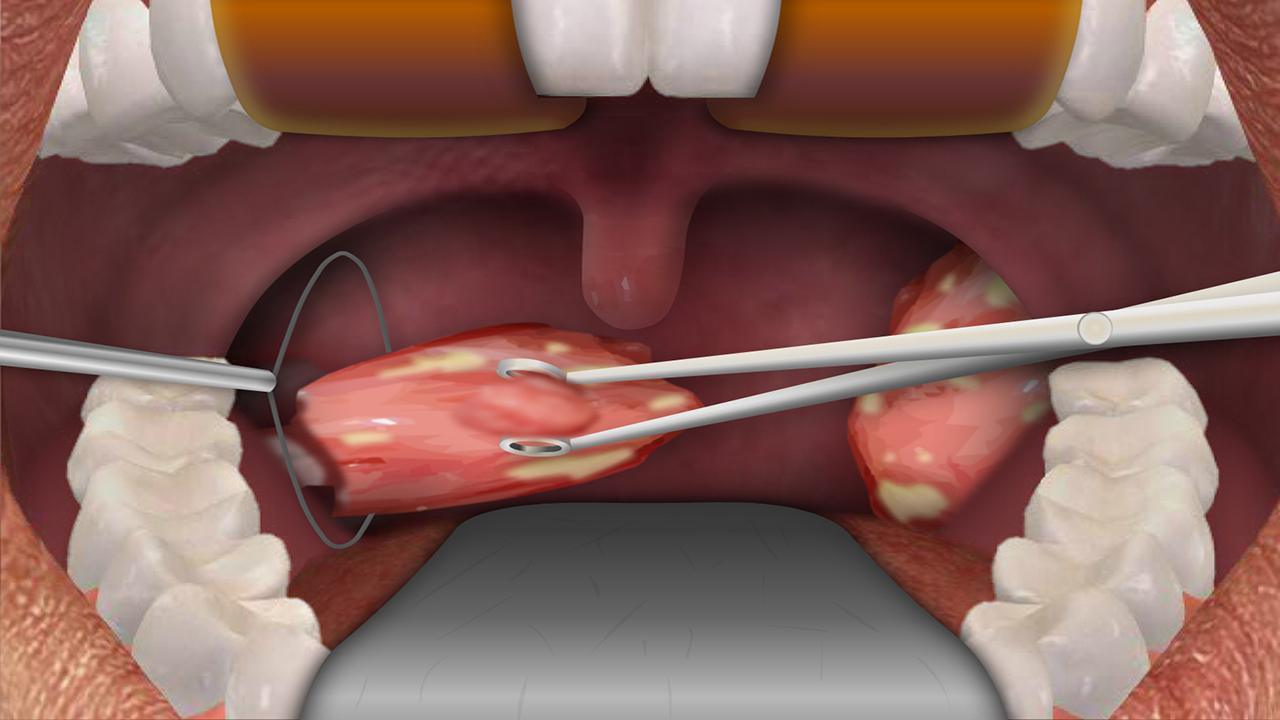Tonsillitis occurs when a person's tonsils are infected with bacteria, causing inflammation of the area. Tonsillitis can be treated with antibiotics, but if the condition continues to reoccur, and the antibiotics are deemed to be ineffective, then a tonsillectomy will be required. Although often thought to be a condition mainly affecting a person in their childhood, adults can also be affected, and there are instances where tonsillitis can lead to a tonsillectomy in adults.

Tonsillectomy in Adults: What Can You Expect from the Day of Surgery?
The term tonsillectomy refers to the surgical removal of one's tonsils (the two pads of tissue at the back of the throat). The procedure is generally the same for children and adults, and rarely requires a prolonged stay at the hospital.An overnight stay may be required if any complications were to arise, or if you have any previous, complex medical conditions. Below is information about the procedure that you need to know.
Before the Surgery
The first and most important thing is to remember the time of your appointment and ensure you are there on time. Bring with you any necessary papers, such as insurance documents, medical forms, etc. Before leaving for the surgical facility, ensure to wear loose fitting clothes or pajamas, and leave all valuable items at home. Unless advised by your health care provider, do not take any medication prior to the surgery.
During the Surgery
Once you have been transferred to the operating room, the health care provider will administer general anesthetic. You are then hooked up to a heart rate monitor and an oximeter to help the health care professionals monitor your well-being during the procedure. Once the anesthetic has taken effect, the doctor will remove the tonsils through your mouth, with no need for any exterior incisions. The base of the tonsils is cauterized (burned) with a specialist electronic cauterizing unit. The entire procedure usually takes around an hour.
Tonsillectomy in Adults: What Will You Experience After the Surgery?
Many people will experience some discomfort after the surgery. It is very common for most people to experience:
- Sore throat – This can range from moderate to severe, and can be particularly painful when trying to swallow. It is possible to last up to two weeks.
- Earache – You may experience pain in your ears, which can last anywhere up to ten days.
- Blood-infused mucus – Your body may expel mucus tinged with blood. This is very normal and can last for around a week.
- Membrane forming – Whilst your body heals, grey/yellowish membranes will form where your tonsils once were. These can take up to two weeks to disappear, depending on how fast your body heals.
- Bad breath – Whilst your throat continues to heal, it may cause you to experience bad breath, which can last a few days after the procedure. Ensuring to practice good oral care and drinking plenty of fluids will help to combat this.
Many of the experiences mentioned above can be unavoidable after a tonsillectomy, but there are home cares that you can try to help relieve these irritable experiences, some of which are explained in the following part.
Tonsillectomy in Adults: Recovery and Home Care
It is very common for the recovery process to last longer for adults who have had a tonsillectomy than it is for children. Children generally recover after five to seven days, whereas adults usually take around ten days to recovery. Below are suggestions to help speed up your recovery:
1. Take Pain Medications as Directed
Taking pain medication as directed will help ease any discomforts. You can also try an ice collar or an ice pack, which many patients have attributed to easing the discomfort they experienced.
2. Limit Your Activities for One Week at least
If you are employed, ensure to apply for medical leave for at least one week. During the recovery time, ensure to get plenty of rest and avoid any strenuous physical activity.
3. Follow the Tonsillectomy Diet
Following the tonsillectomy diet will help avoid any unnecessary discomforts. This means to begin with clear liquids, such as water, popsicles or broth. Then move on to full liquids, such as milk, ice cream, cream soups and cooked cereals. When you feel comfortable when swallowing, begin to consume soft foods, such as mashed potato or scrambled egg.
There are certain foods and drinks that you should avoid until you have totally recovered. These are spicy foods, rough foods (such as cold cereals, potato chips, or popcorn), and acidic foods (such as citrus fruits).
4. Drink Plenty of Water
Throughout your entire recovery process, ensuring to remain hydrated by drinking plenty of water will help your heal dramatically. It will also help coat your stomach and prevent nausea.
Tonsillectomy in Adults: When to See a Doctor
Even if you have followed the requirements of doctor after the surgery, there are certain complications that can arise, which require immediate medical attentions.
- Bleeding – Specks of dark blood are expected in the mucus, nose or saliva. If any bright red blood is present, then visit your health care provider as surgery may be required to stop the bleeding.
- Fever – If you develop a fever and your body temperature is 102 degree F (38.9 degree C) or higher, then contact your doctor.
- Dehydration – Signs of dehydration include thirst, weakness, dizziness, headache and reduced urination. If you are experiencing one or more of these signs after a tonsillectomy, then contact your health care professional.
- Breathing Problems – It is common to experience exacerbated snoring or heavier breathing after a tonsillectomy. If you’re having trouble breathing, then contact your doctor immediately.
